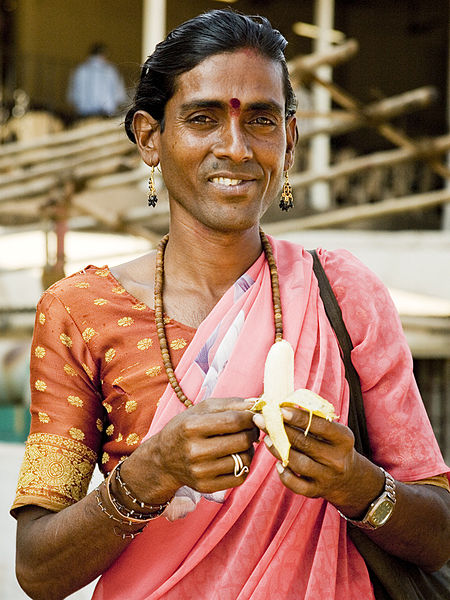
OK, I admit that this post is not really about sex, but about gender identity and sexuality. But, while you’re here, have a look at some of the positives developments for the rights of sexual minorities in India in 2009. One major caveat: India has a very long way to go before the rights of sexual minorities are fully acknowledged and protected. The victories of 2009 will only make the smallest of dents in India’s large and growing population of people infected with HIV/AIDS and the mainstreaming of “alternative” sexual identities. Organizations such as the Naz Foundation will theoretically be able to work in vulnerable communities with less fear of police harassment, but it still does not come anywhere close to eliminating the stigma that these communities face on a daily basis. Thousands of gay men, lesbians and transgendered have to hide their identities from their family and community and these legal victories will do nothing to make their lives any less hidden.
Section 377 of the Indian Penal Code specified sodomy is illegal and is punishable by up to life in prison. It was adopted in 1860 by the British Indian government at the behest Lord Macaulay. Although some flavors of heterosexual contact was also forbidden, it was specifically written into the law to outlaw homosexuality. Although Article 377 has been rarely used, the fact that it has been on the books and has been used to harass HIV/AIDS educators as recently as 2006 is a violation of the human rights of those engaged in private, consensual conduct and of those engaged in educating communities about HIV/AIDS prevention.
On July 2, 2009, history was made when the Delhi High Court declared Section 377 in violation of Article 14 of the Indian Constitution. One of the paragraphs of the Delhi High Court ruling is worth quoting:
Where society can display inclusiveness and understanding, such persons can be assured of a life of dignity and non-discrimination. This was the ‘spirit behind the Resolution’ of which Nehru spoke so passionately. In our view, Indian Constitutional law does not permit the statutory criminal law to be held captive by the popular misconceptions of who the LGBTs are. It cannot be forgotten that discrimination is antithesis of equality and that it is the recognition of equality which will foster the dignity of every individual.
The practical impact of this is potentially very positive. But, abolishing Section 377 is only the tip of the iceberg of the way in which gays and lesbians in India are treated by the government and more importantly by the community in which they reside. I also want to stress that although the Delhi High Court has ruled, the Supreme Court could still weigh in on the case. It is unlikely that the Supreme Court will do so, but it is always a possibility.
In another victory, the Central Election Commission, known as the CEC (there is no equivalent in the US– in India, the CEC is almost a separate branch of government) is now allowing hijras (a third gender) to register their gender as “other” on voter cards instead of having to use male or female. This step allows hijras to fully participate in the electoral process and demand other rights that have come slowly because of the legal ambiguities surrounding their lives. Some of these advances are no doubt due to their community’s successful attempts to become a political force in the states where they live.
At first glance, these changes in the law seem small and in a way they are. But, symbolically I think that they set in motion a process of educating Indians about identities that have been brutally marginalized or fetishized by the mainstream as they go through their own bit of sexual liberation. Given how far India has come since chucking the British Raj out of the country, I’m optimistic that 2010 and beyond will be ever better for all Indians, regardless of whether they are man, woman or other.
If you’re interested in more information about this, you can comment below. You can also check out a report that Human Rights Watch did on this very issue.
